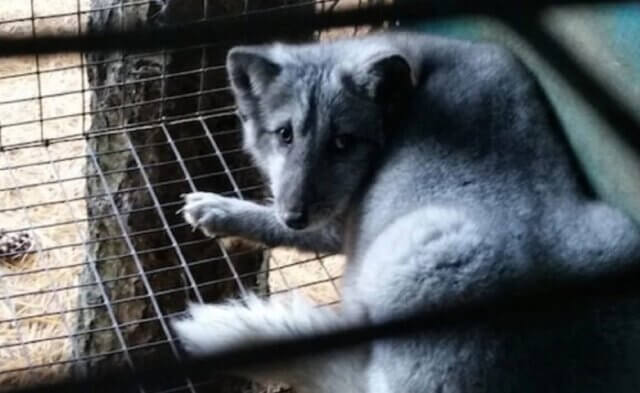If the coronavirus hadn’t turned our lives upside down, right about now, thousands of vacationers would be taking cruises to Alaska to admire all the spectacular scenery our northernmost state has to offer. Unfortunately, most cruise liners also offer dog-sledding tours as an offshore excursion option. While the Alaska cruise industry will remain on lockdown for the foreseeable future, so will all the “sled dogs” tourists go to see.
Throughout Alaska, dogs who are forced to run in endurance races like the Iditarod or used in commercial sledding operations typically spend all of their nonworking hours at the end of a chain. Conditions are grim. As far as the eye can see, row upon row of dogs howl, bark and run frantically in circles around dilapidated wooden “houses” or plastic barrels—their only shelter from the bitter cold and biting wind. They’re stored like inventory, their worlds reduced to a 6-foot radius of urine, feces and mud.
As detailed in a PETA undercover investigation into kennels owned by Iditarod mushers, dogs are routinely fed rotten and/or moldy meat. Arthritic, crippled and injured dogs may never see a veterinarian.
This isn’t “just” a few dogs at a few random facilities; the abuse is pervasive and entrenched. Thousands of dogs are commercially bred each year to haul sleds. Those who can’t or won’t pull fast enough are doomed. One veteran musher alleged that trainers in the industry have killed “hundreds on top of hundreds or more” dogs who weren’t fast enough to compete. Another musher recalled seeing “piles” of dead dogs. The largest dog-sledding operation in the U.S. routinely and unapologetically shot dogs and dumped their bodies in a pit until public outcry put a stop to it. The mindset is perhaps best summed up by one former Iditarod trainer who said, “They’re like tools. That’s all they are is a tool.”
When cruisers disembark in Alaska, what they expect is hardly what they see once they arrive at the kennels. One reviewer noted, “The chain [the dog] was attached to was probably no more than 3 feet long giving him no room to move. … I feel sick that I was a part of this abuse.”
Even though it’s documented that more than 150 dogs have died since the Iditarod began, it’s impossible to know how many dogs perish during training or while chained outside. Kennel operators and breeders aren’t required to report how many dogs die in their “care.”
Dogs are highly social pack animals who want and need to be part of a family. When relegated to the outdoors and denied the opportunity to play and engage with other dogs or humans, they become despondent and depressed. Some simply shut down altogether while others become frustrated and aggressive.
As our country continues to open up, if you’re planning a trip, please never book a dog sled ride. Remember, long after you’re home with memories and photos, the dogs will still be there, howling in vain for relief that will never come.





